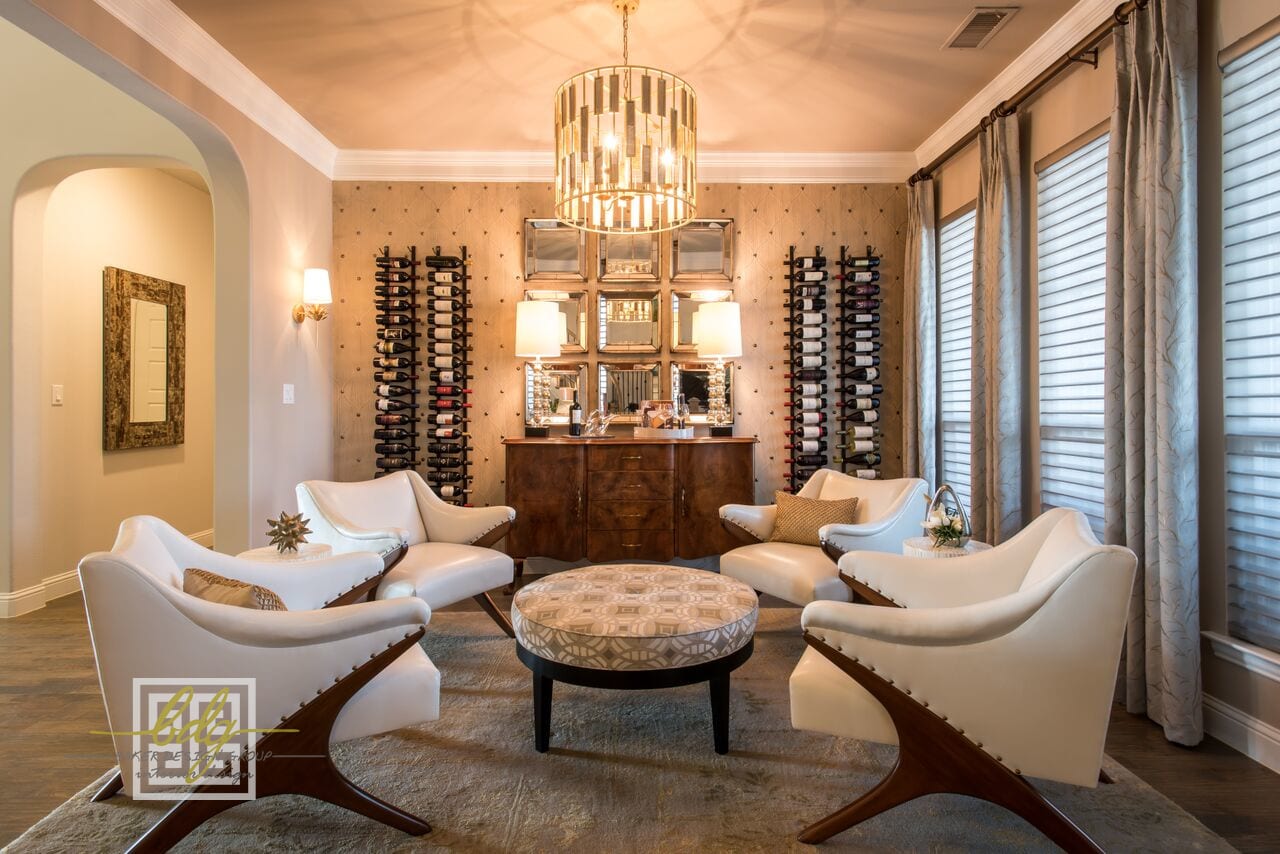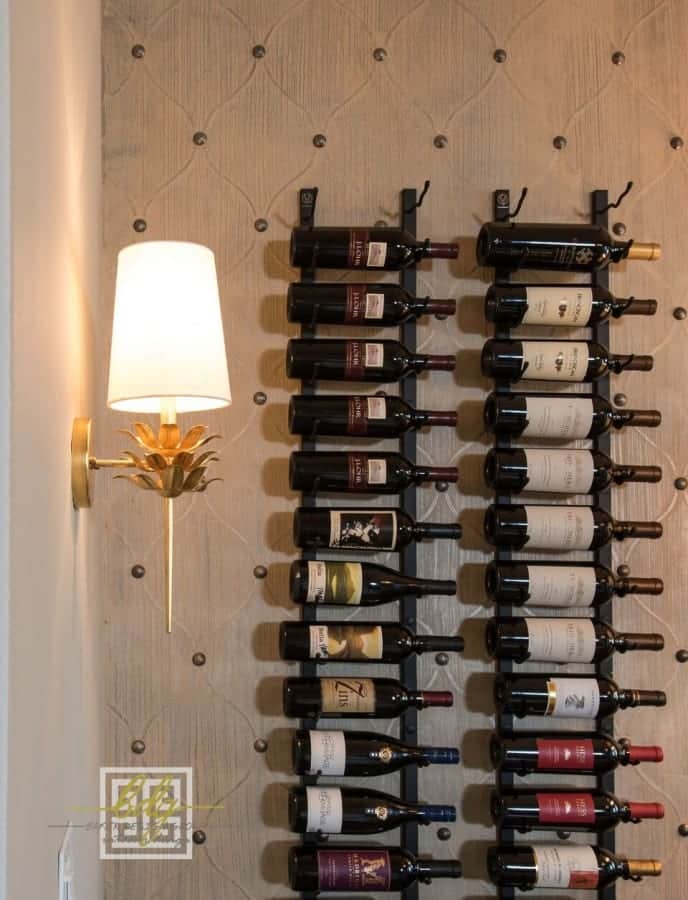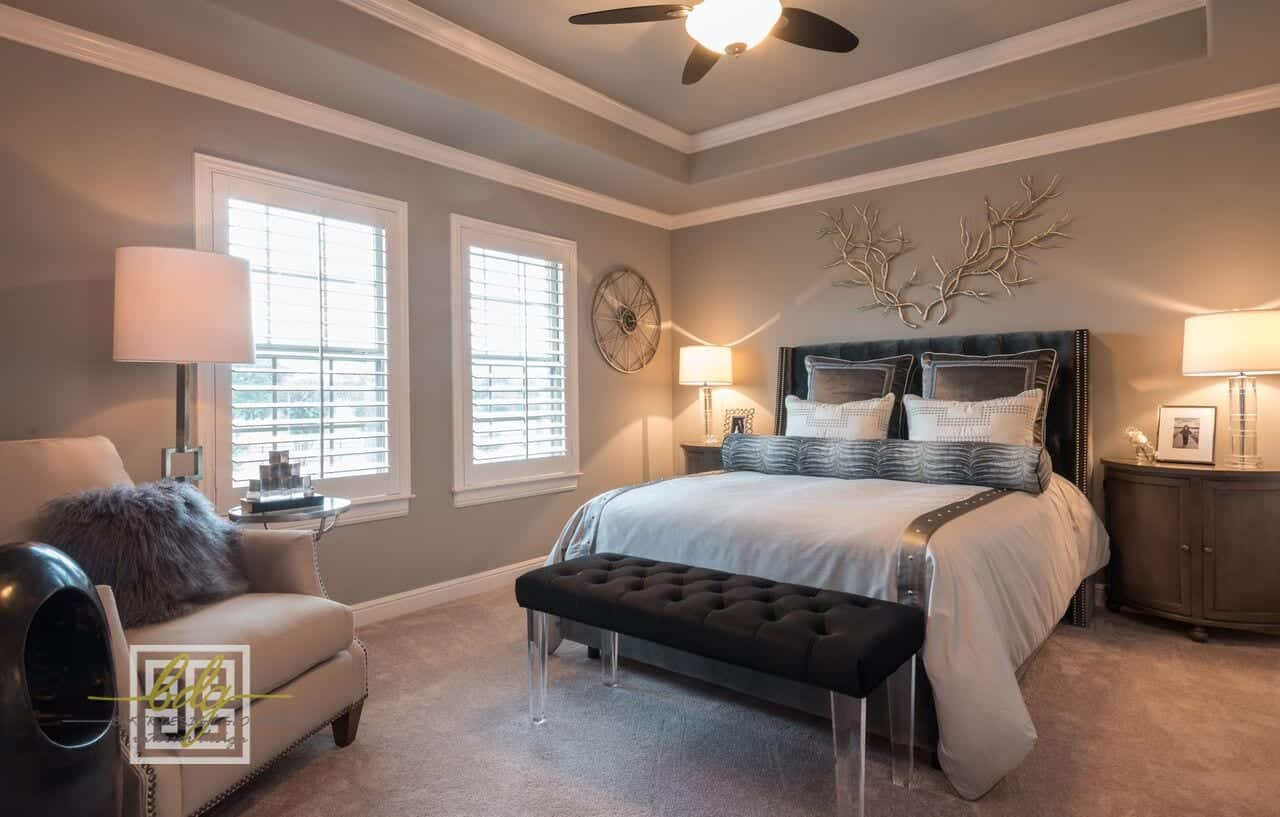Designer Lighting Tips for the Key Rooms of Your Home
#1 Rule of Thumb: Have a mix of sources of light at different levels. This creates a flattering, photo-worthy ambiance.
#2 Rule of Thumb: Don’t forget about task lighting! Light up whatever you do in that particular space (whether it be reading, cooking, or double-checking your outfit).
Living Room
The living room is the perfect place to bring in a combination of light sources at different levels. Bring in table lamps and floor lamps, some that glow downwards and others that shine towards your ceiling. (Note the dancing shadows in this wine tasting living room!)

In a living room that functions more traditionally than this wine room, enhancing other activities like reading and game playing with down-glowing lamps is a good move. Putting the lamps and the overhead lights on dimmers transitions your living room from day to night and activity to activity.
Dining Room
Make the dining room table the center of the room by angling lights toward it. The height and angle of the ceiling in the photo below help to point the eye to the table, but a room without helpful architecture can still create this look. Pendants, chandeliers, and small side lamps for credenzas are all ways to make the dining room feel relaxed and welcoming.
Dining-Room Chandelier
To avoid casting shadows on diners, choose a fixture smaller than the width of your table (three-quarters the width works well). Having the light hang about 3′ above the table will make the room feel more intimate, while 4′ above allows more openness.
Kitchen
For functionality, illuminate your work surfaces closest to eye level and put your overhead lighting on a dimmer that you can turn to the highest brightness while you are cooking. Every curve of the kitchen is emphasized with under-cabinet lights. For a more relaxed feel after the meal prep (and chopping) is done, rely on decorative lighting like our pendants below.
Kitchen Pendants
Measuring in from the end of your island about a foot to 15″ allows for appealing, even spacing of the average sized pendants over a standard island. The pendants, similar to the chandelier over a dining room table, should hang 3′-4′ about the countertop.
Bedroom
Our goals for bedroom lighting are always to allow for reading habits of the clients, as well as to create a cozy, enveloping environment around the bed. The glow of lamplight on the soft textures of the bed is inviting and lovely!
Bedside Lamps
Make sure to consider your eye level when you sit up in bed to read or watch tv. Choose a lamp that aligns well with you. Don’t forget to set up your bedside so that turning the lights off is easy when it comes time to snooze.
Bathroom
Pro Tip: Lighting for makeup is very important. It’s best to have side lighting (like the small sconce attached to the cabinets that frame the mirror, above) to see your face in detail. Lighting above your mirror works to fill in any shadows cast by the lights on the side!
Bathroom Sconces
Mount your sconces so that the bottom of the shade is just below your eye level. Having even more overhead lighting besides just at the mirror is a plus in a larger bathroom.
We hope that you learned something from this #HowToThursday! After reading these Dallas designer tips about lighting, would you like a designer’s touch in your home?


















